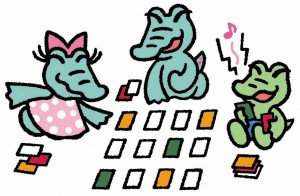curriculum EFL eikaiwa ES expectations kids language courses
by sendaiben
leave a comment
Pair vocabulary activity
Class: children’s eikaiwa
Students: four seven-year-olds (experience of learning English 6 months-2 years)
I was teaching a group of first year elementary school age students a couple of days ago, and stumbled upon a wonderful activity that really gave me a boost.
We were practicing insect names again (for the third time), and the students were getting quite good. Each student had gaps, but as a group they could name all of them. I had two sets of small flashcards, so I had put one set in front of each pair of students. I started out calling out the names and having the students touch the pictures, but then realised I could have them work in pairs, one student being the ‘teacher’ and calling out words and the other being the ‘student’ and touching the pictures.
This is in no way a new activity, but the way my students took to it blew me away, and made me realise they are capable of much more than I was giving them credit for.
They not only did the activity perfectly, calling out and touching the appropriate pictures, but also became real teachers: helping their ‘students’ if they didn’t know the word, giving hints, waiting long enough to give their partner a chance to answer but not so long that they would get frustrated before helping…
Those seven-year-olds showed me that they are not just capable of taking on more active roles in their English lessons, but want to.
One of my goals for the rest of the year and for next year is to bring more realia, more content, and more personalisation into my classes. Giving the students a wider variety of roles in class will clearly need to be a part of this.
It’s very exciting to look at my classes and see where they can be improved: this year has been much more enjoyable since I started my self-improvement project. How about you: have you noticed anything about your classes recently?

Leave a Reply